Abstract
White, P. J. (Roswell Park Memorial Institute, Buffalo, N.Y.) and C. A. Nichol. Effects of uracil and thymidine on the development of resistance to 5-fluorouracil in Pediococcus cerevisiae. J. Bacteriol. 85:97–105. 1963.—Growth of Pediococcus cerevisiae ATCC 8081 in a basal semidefined medium was inhibited by 5-fluorouracil (FU) and 5-fluoro-2′-deoxyuridine (FUDR). Addition of uracil slightly decreased sensitivity to FU, but did not affect inhibition by FUDR. Addition of thymidine alone increased sensitivity to FUDR 500-fold, but did not appreciably affect sensitivity to FU. This organism was able to grow in the presence of high concentrations of either drug when both uracil and thymidine were added to the medium. Substrains resistant to FU were developed in the basal medium, or in basal medium with added uracil, or with thymidine. The substrains developed in the presence of uracil or thymidine were not resistant when these compounds were omitted from the medium. Cross resistance to FUDR was shown only when thymidine was present. The ability to use thymidine as a growth factor in the absence of leucovorin was lost in the substrains developed in the presence of uracil, though not in the other substrains. Washed suspensions of organisms of all strains hydrolyzed FUDR to FU, the parent strain being most active in this respect. The cellular uptake of fluorouracil-2-C14 was less in all of the resistant substrains than in the parent strain, whether or not uracil or thymidine was present during the incubation. This uptake of FU-C14 was decreased most markedly in the substrains which became resistant to FU in the absence of uracil.
Full text
PDF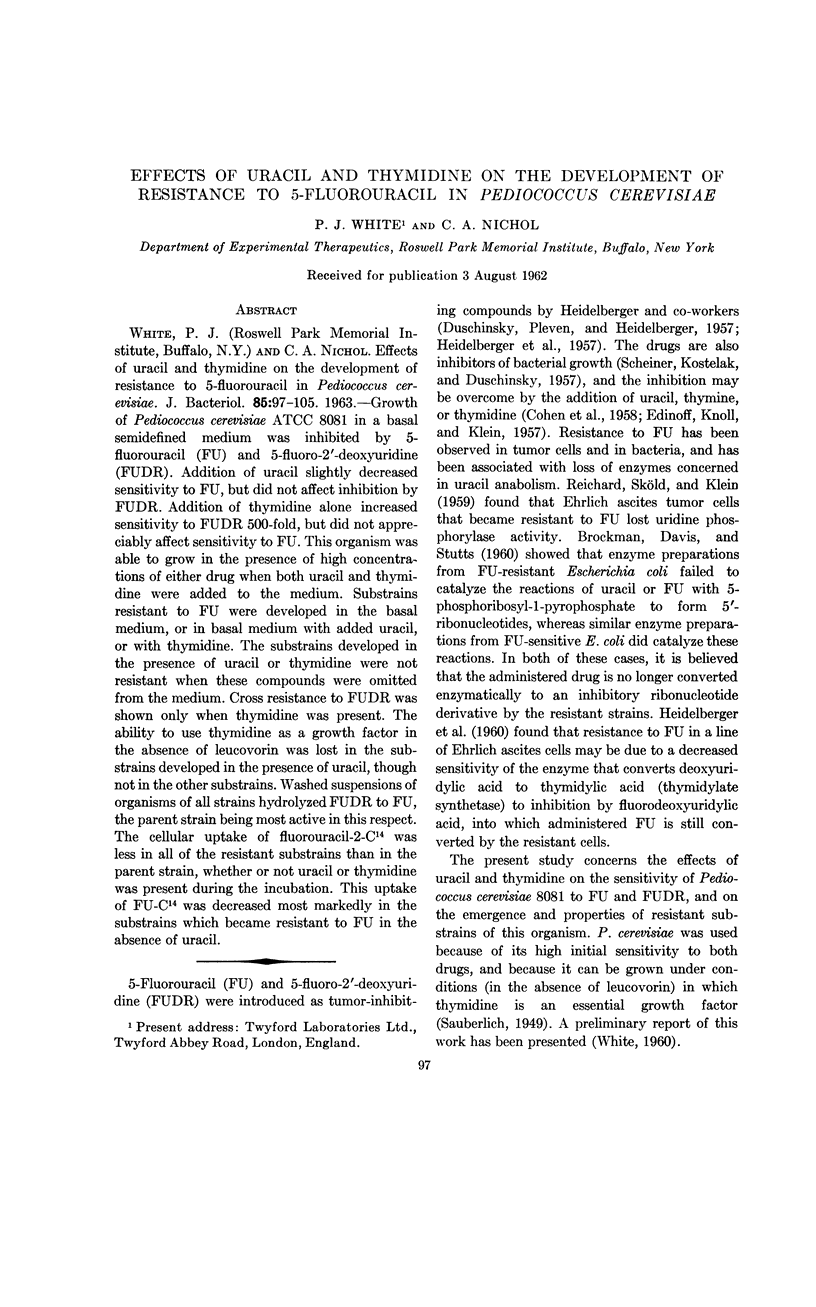
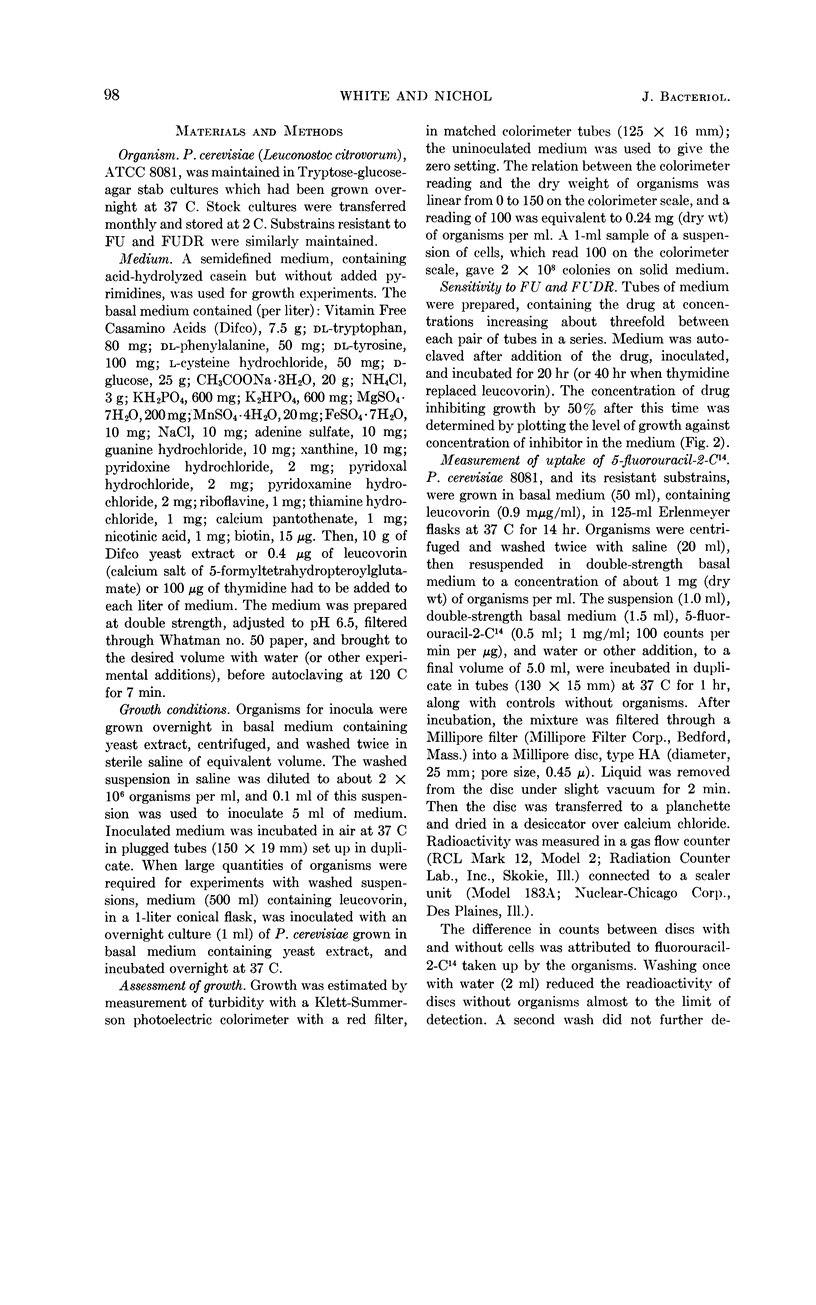

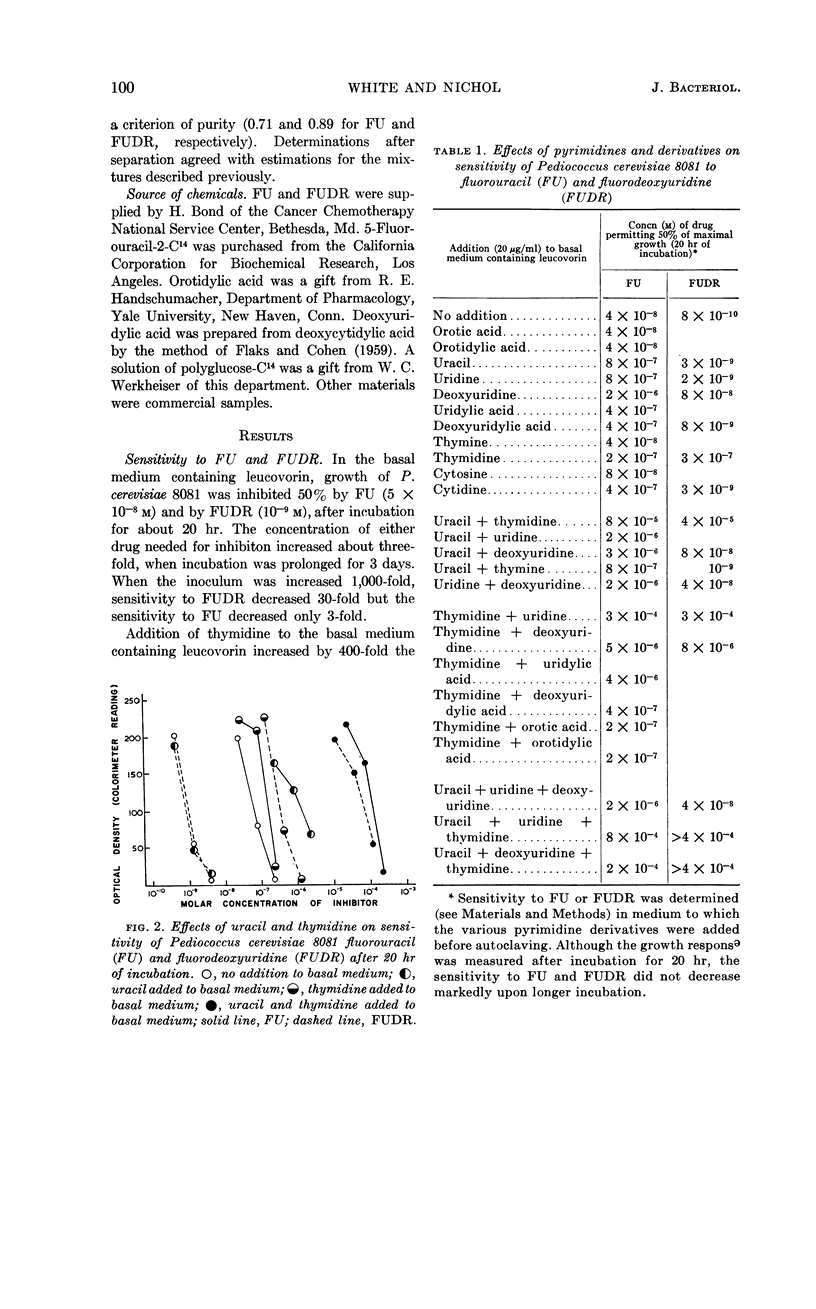
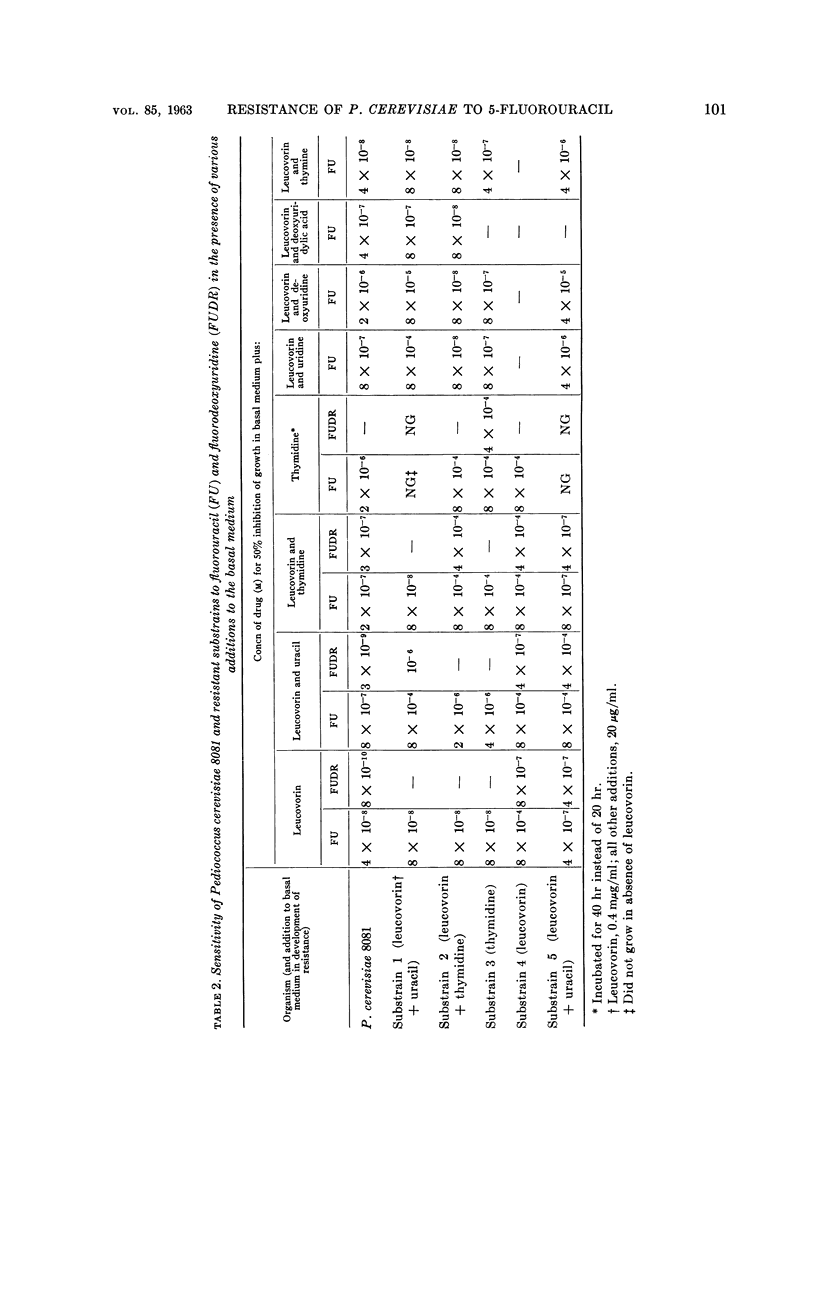
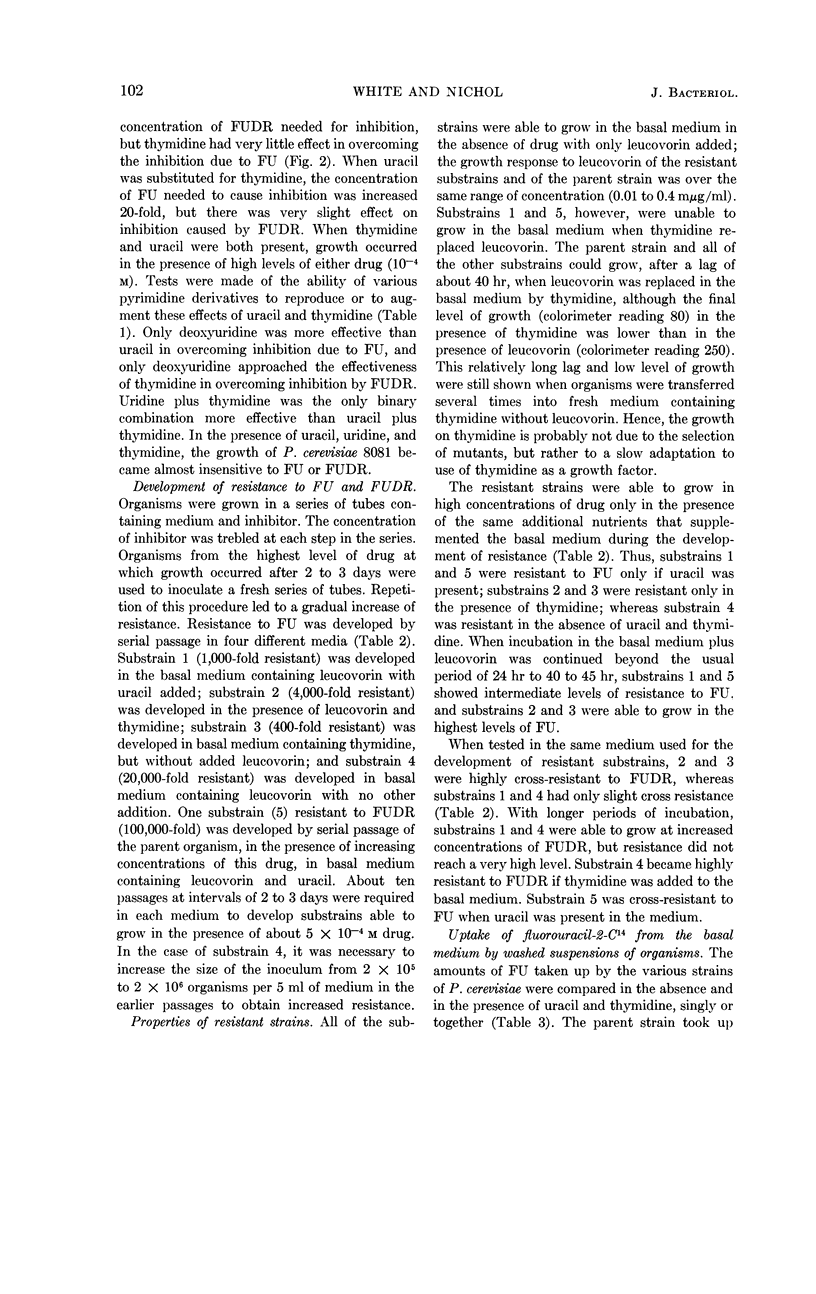
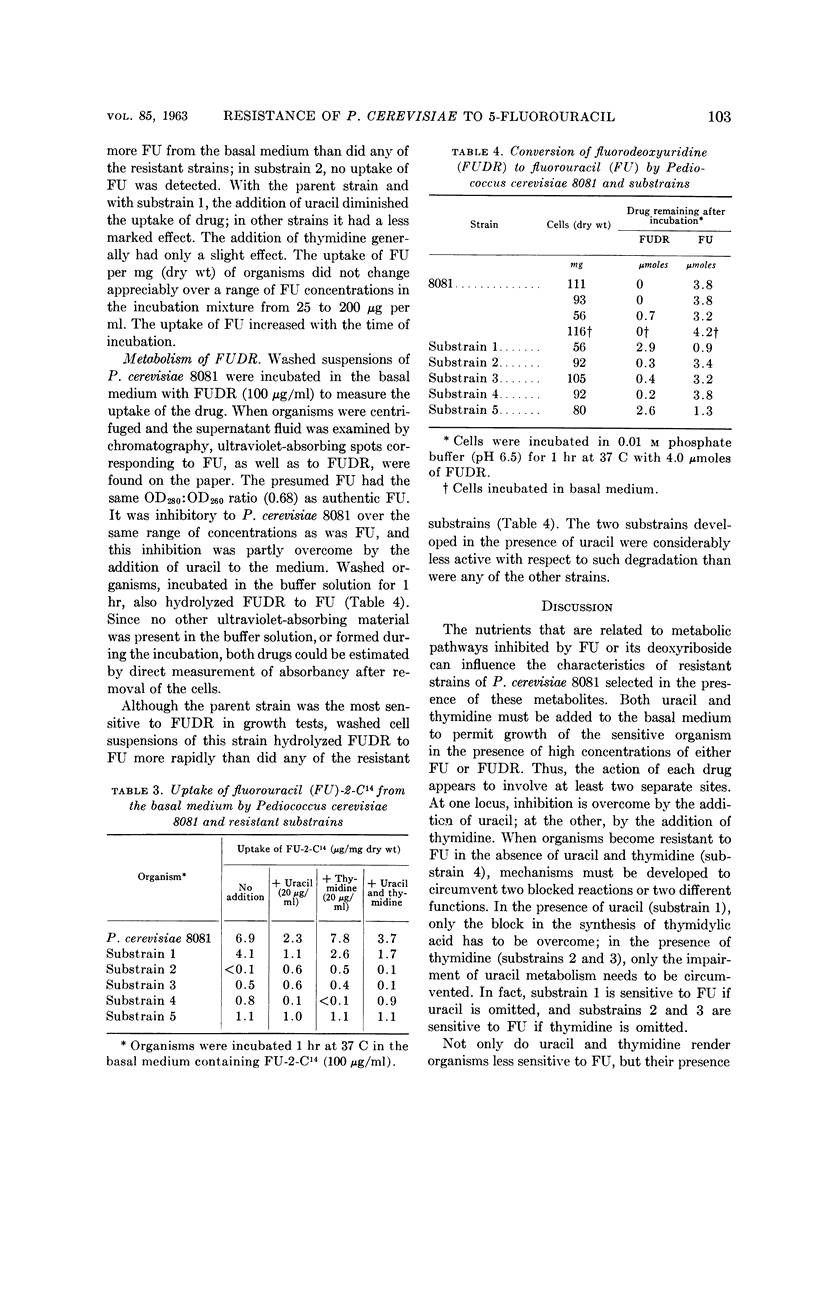

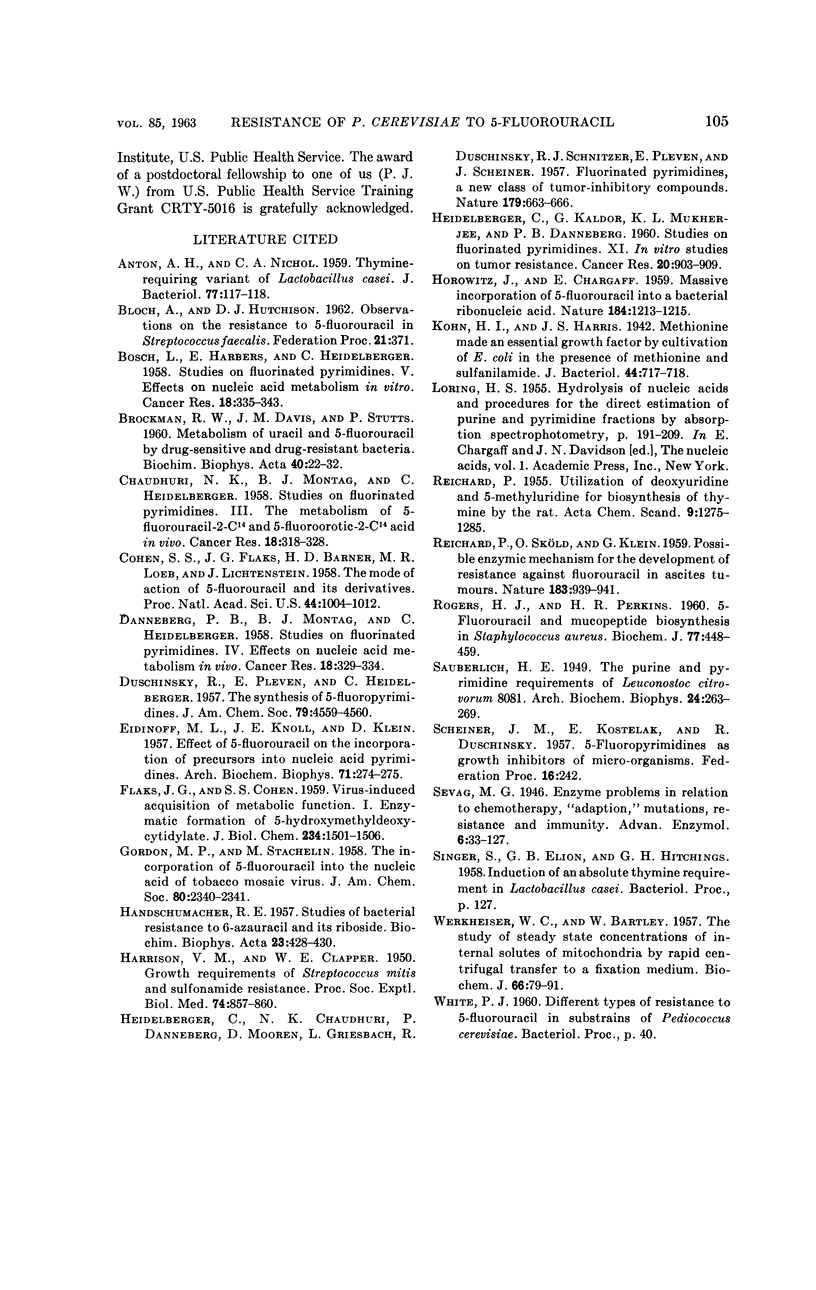
Selected References
These references are in PubMed. This may not be the complete list of references from this article.
- ANTON A. H., NICHOL C. A. Thymine-requiring variant of Lactobacillus casei. J Bacteriol. 1959 Jan;77(1):117–118. doi: 10.1128/jb.77.1.117-118.1959. [DOI] [PMC free article] [PubMed] [Google Scholar]
- BOSCH L., HARBERS E., HEIDELBERGER C. Studies on fluorinated pyrimidines. V. Effects on nucleic acid metabolism in vitro. Cancer Res. 1958 Apr;18(3):335–343. [PubMed] [Google Scholar]
- BROCKMAN R. W., DAVIS J. M., STUTTS P. Metabolism of uracil and 5-fluorouracil by drug-sensitive and by drug-resistant bacteria. Biochim Biophys Acta. 1960 May 6;40:22–32. doi: 10.1016/0006-3002(60)91311-1. [DOI] [PubMed] [Google Scholar]
- CHAUDHURI N. K., MONTAG B. J., HEIDELBERGER C. Studies on fluorinated pyrimidines. III. The metabolism of 5-fluorouracil-2-C14 and 5-fluoroorotic-2-C14 acid in vivo. Cancer Res. 1958 Apr;18(3):318–328. [PubMed] [Google Scholar]
- Cohen S. S., Flaks J. G., Barner H. D., Loeb M. R., Lichtenstein J. THE MODE OF ACTION OF 5-FLUOROURACIL AND ITS DERIVATIVES. Proc Natl Acad Sci U S A. 1958 Oct 15;44(10):1004–1012. doi: 10.1073/pnas.44.10.1004. [DOI] [PMC free article] [PubMed] [Google Scholar]
- DANNEBERG P. B., MONTAG B. J., HEIDELBERGER C. Studies on fluorinated pyrimidines. IV. Effects on nucleic acid metabolism in vivo. Cancer Res. 1958 Apr;18(3):329–334. [PubMed] [Google Scholar]
- EIDINOFF M. L., KNOLL J. E., KLEIN D. Effect of 5-fluorouracil on the incorporation of precursors into nucleic acid pyrimidines. Arch Biochem Biophys. 1957 Sep;71(1):274–275. doi: 10.1016/0003-9861(57)90028-0. [DOI] [PubMed] [Google Scholar]
- FLAKS J. G., COHEN S. S. Virus-induced acquisition of metabolic function. I. Enzymatic formation of 5-hydroxymethyldeoxycytidylate. J Biol Chem. 1959 Jun;234(6):1501–1506. [PubMed] [Google Scholar]
- HANDSCHUMACHER R. E. Studies of bacterial resistance to 6-azauracil and its riboside. Biochim Biophys Acta. 1957 Feb;23(2):428–430. doi: 10.1016/0006-3002(57)90348-7. [DOI] [PubMed] [Google Scholar]
- HARRISON V. M., CLAPPER W. E. Growth requirements of Streptococcus mitis and sulfonamide resistance. Proc Soc Exp Biol Med. 1950 Aug;74(4):857–860. doi: 10.3181/00379727-74-18069. [DOI] [PubMed] [Google Scholar]
- HEIDELBERGER C., CHAUDHURI N. K., DANNEBERG P., MOOREN D., GRIESBACH L., DUSCHINSKY R., SCHNITZER R. J., PLEVEN E., SCHEINER J. Fluorinated pyrimidines, a new class of tumour-inhibitory compounds. Nature. 1957 Mar 30;179(4561):663–666. doi: 10.1038/179663a0. [DOI] [PubMed] [Google Scholar]
- HEIDELBERGER C., KALDOR G., MUKHERJEE K. L., DANNEBERG P. B. Studies on fluorinated pyrimidines. XI. In vitro studies on tumor resistance. Cancer Res. 1960 Jul;20:903–909. [PubMed] [Google Scholar]
- HOROWITZ J., CHARGAFF E. Massive incorporation of 5-fluorouracil into a bacterial ribonucleic acid. Nature. 1959 Oct 17;184:1213–1215. doi: 10.1038/1841213a0. [DOI] [PubMed] [Google Scholar]
- Kohn H. I., Harris J. S. Methionine Made an Essential Growth Factor by Cultivation of E. coli in the Presence of Methionine and Sulfanilamide. J Bacteriol. 1942 Dec;44(6):717–718. doi: 10.1128/jb.44.6.717-718.1942. [DOI] [PMC free article] [PubMed] [Google Scholar]
- REICHARD P., SKOLD O., KLEIN G. Possible enzymic mechanism for the development of resistance against fluorouracil in ascites tumours. Nature. 1959 Apr 4;183(4666):939–941. doi: 10.1038/183939a0. [DOI] [PubMed] [Google Scholar]
- ROGERS H. J., PERKINS H. R. 5-Fluorouracil and mucopeptide biosynthesis by Staphylococcus aureus. Biochem J. 1960 Dec;77:448–459. doi: 10.1042/bj0770448. [DOI] [PMC free article] [PubMed] [Google Scholar]
- SAUBERLICH H. E. The purine and pyrimidine requirements of Leuconostoc citrovorum 8081. Arch Biochem. 1949 Dec;24(2):263–269. [PubMed] [Google Scholar]
- WERKHEISER W. C., BARTLEY W. The study of steady-state concentrations of internal solutes of mitochondria by rapid centrifugal transfer to a fixation medium. Biochem J. 1957 May;66(1):79–91. doi: 10.1042/bj0660079. [DOI] [PMC free article] [PubMed] [Google Scholar]


